José Ortiz Echagüe (1886–1980) is the great “amateur” Spanish photographer of the XXth century. In 1935 the “American Photography” magazine considered him as one of the top three photographers in the world, he was however a difficult profile to classify. He was a military engineer that in 1923 founded C.A.S.A. (Construcciones Aeronáuticas S.A. or Aeronautic Constructions S.A.), and later, in 1950, he developed one of the first Spanish factories of automobiles, SEAT, which he would run until 1976.
Photography was but a hobby to Ortiz Echagüe, he had the will to exploit his natural talent but he mostly enjoyed it on weekends and holiday trips. His photographic work focused on Spanish customs, traditions and common places. His work was first edited in the year 1950 as part of a wonderful collection about the Spanish Nation. One of them was “España Mística” (Mystic Spain) which included a beautiful feature on the Ermitas (little chapels or shrines) of Córdoba.
These astonishing pictures were taken using the difficult technique of the “Paper Fresson”. José Ortiz Echangüe mastered this particular technique and used it frequently from 1906 to 1966, as it then ceased to be commercialized; in view of this situation he decided to buy the patent of the process and gave it a different name “Carbondir”. By doing so he continued to use this technique in his pictures. This technique was important to him due to the higher contrast and fuller shades that it granted the picture, that gave his photographs a greater visual impact.
I took the liberty of copying a wonderful passage of this book “Mystic Spain” where this artist depicted the beauty of our Ermitas.
All of a sudden Zurbarán.
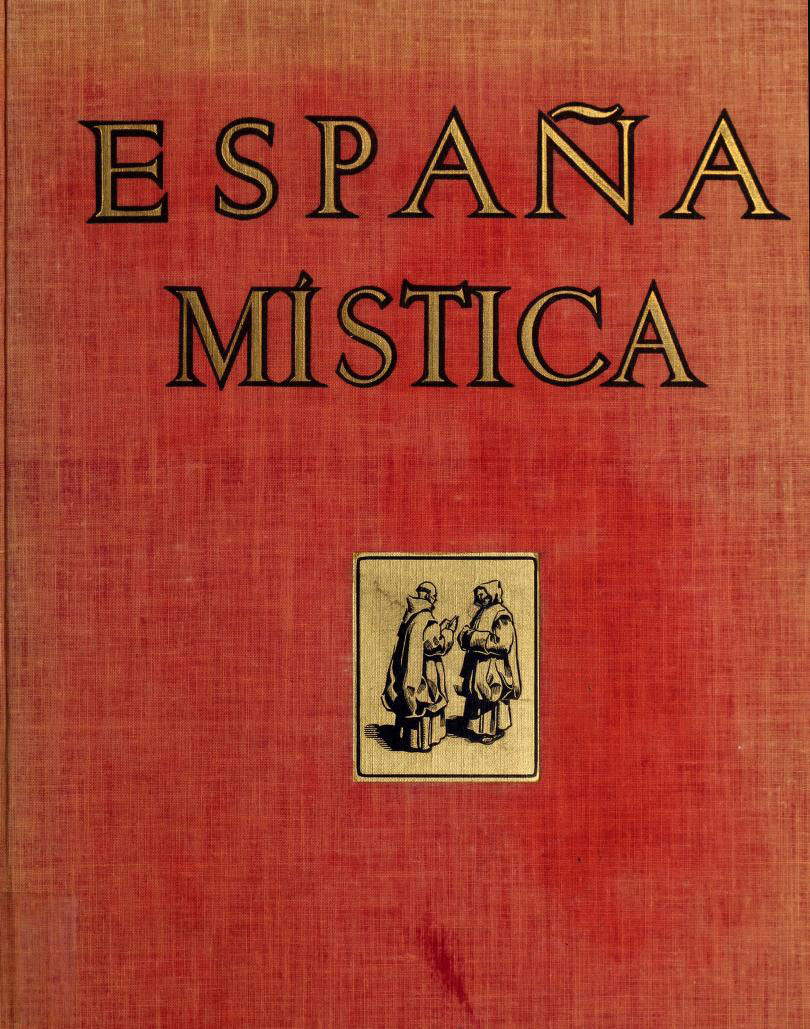
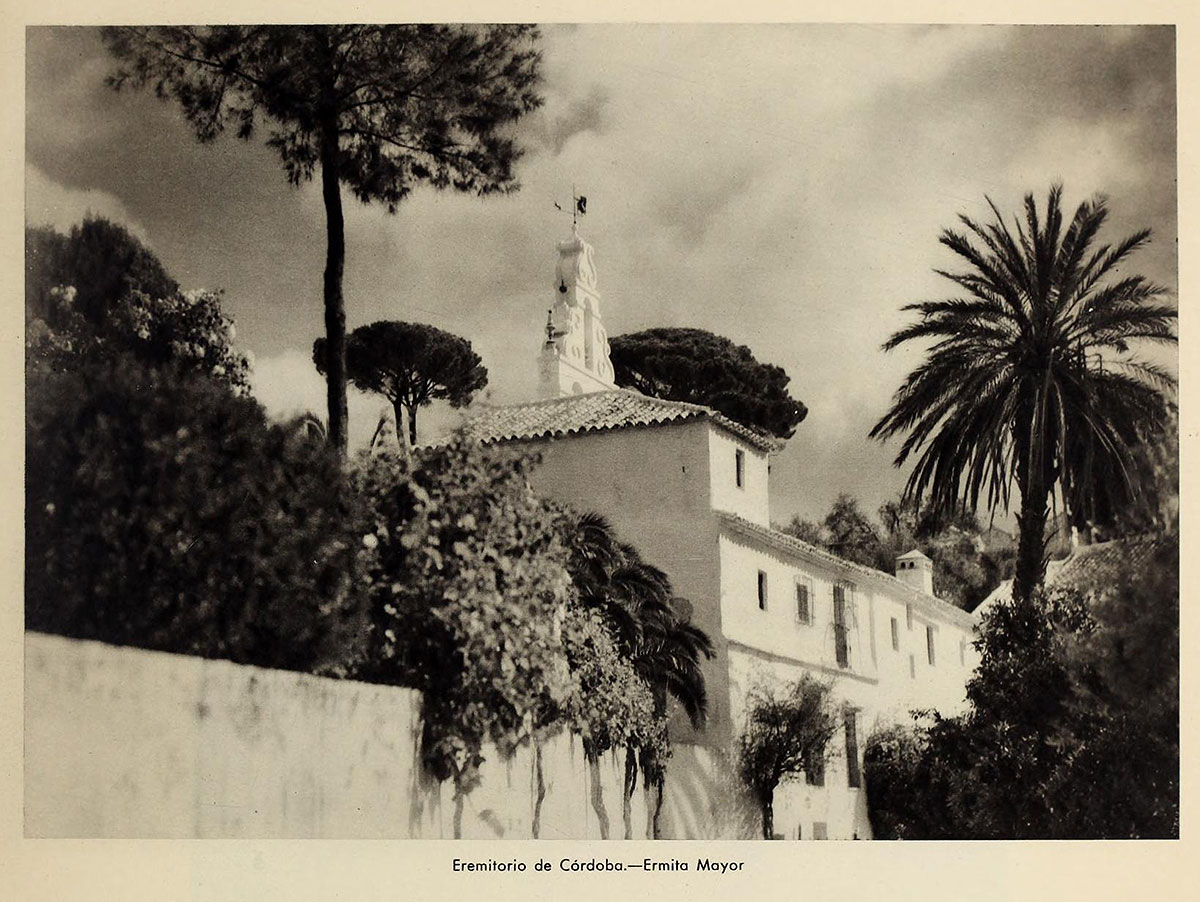

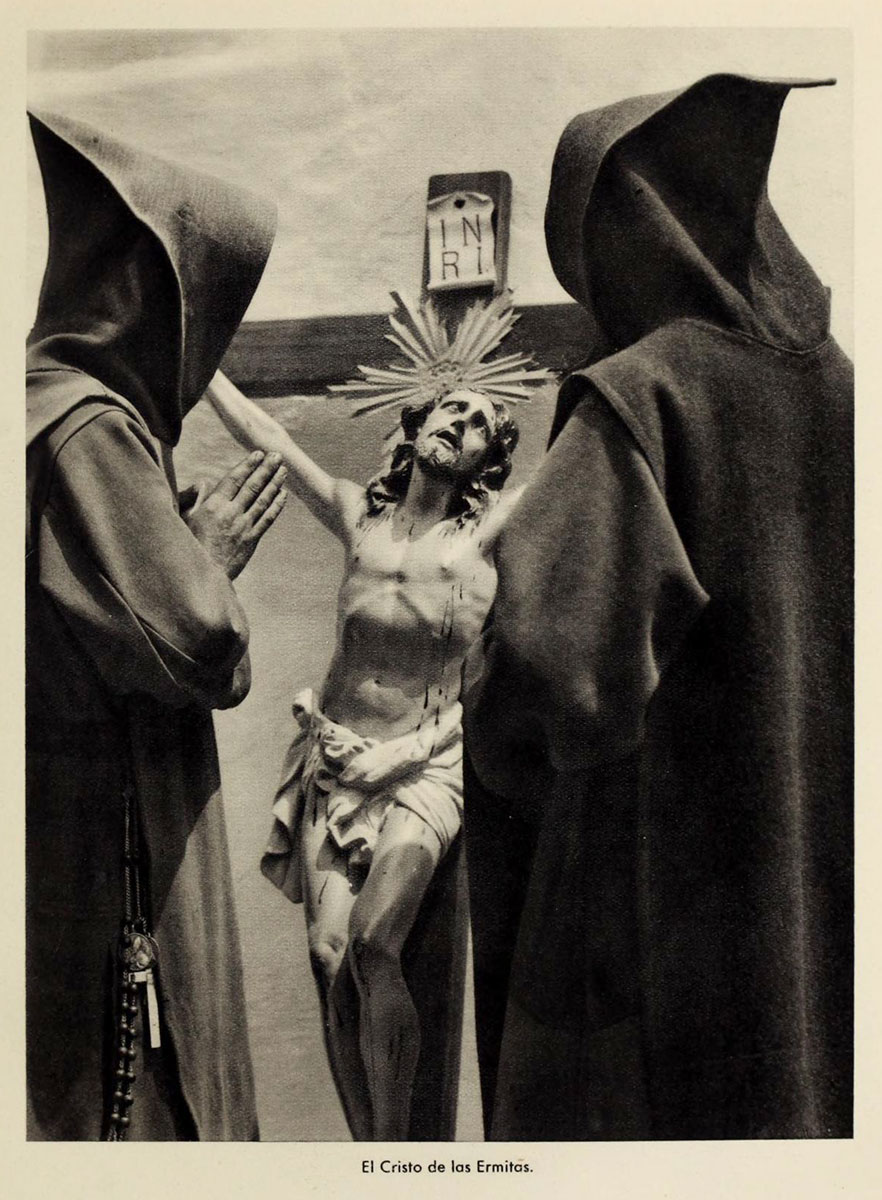
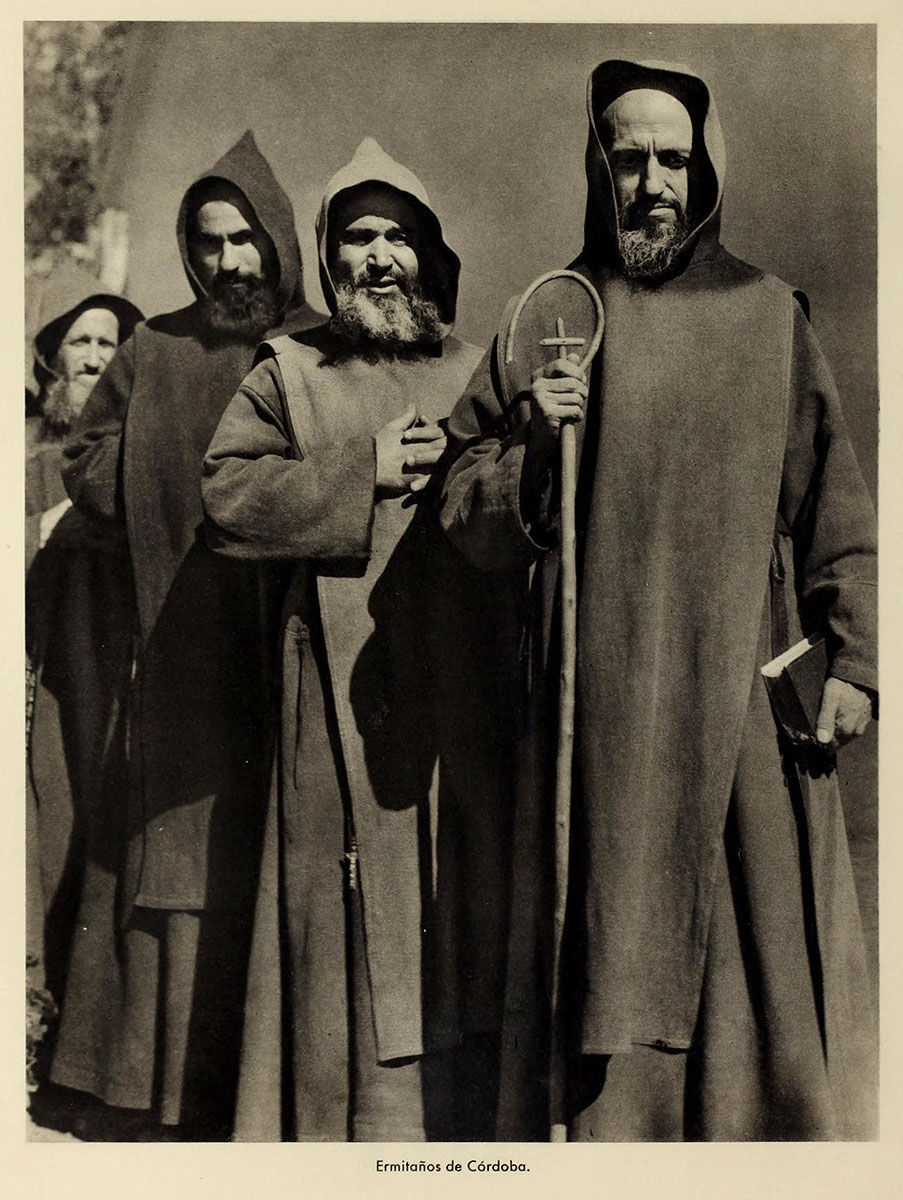
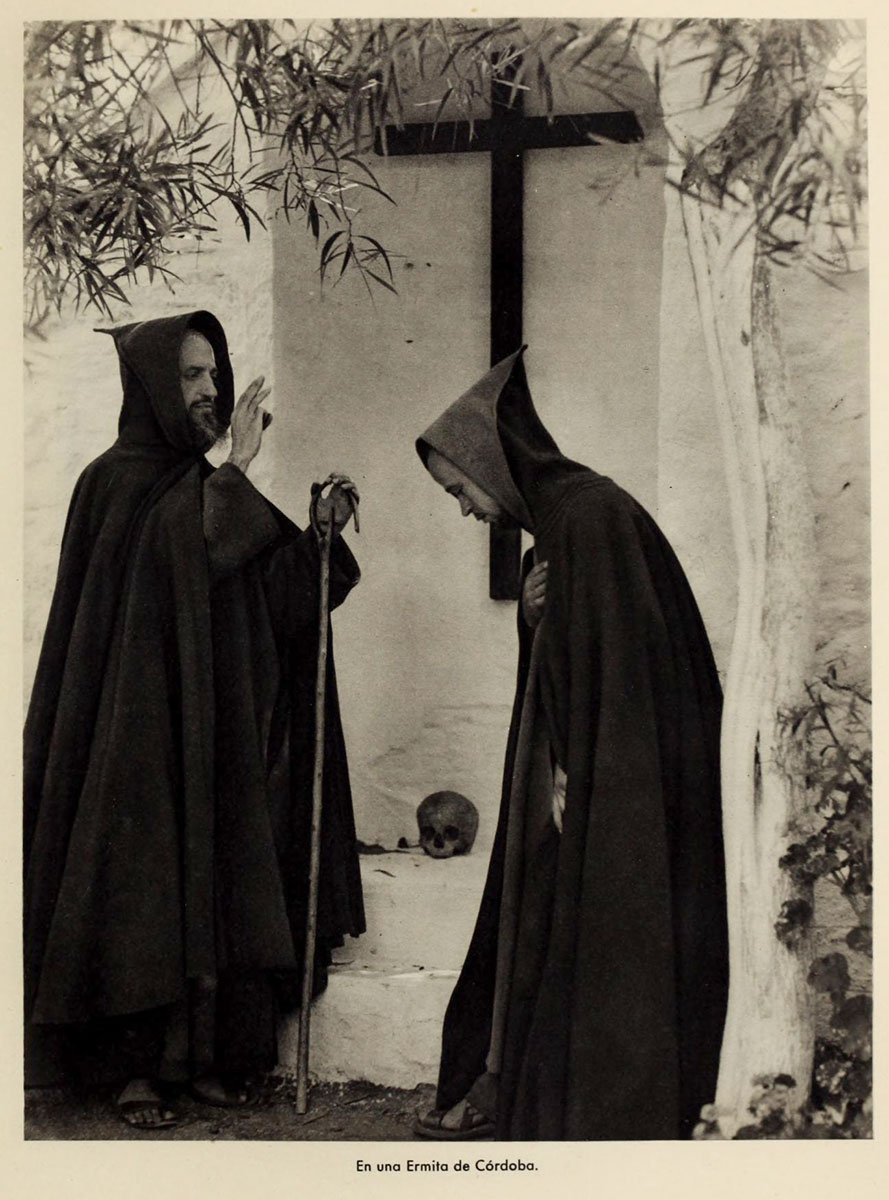
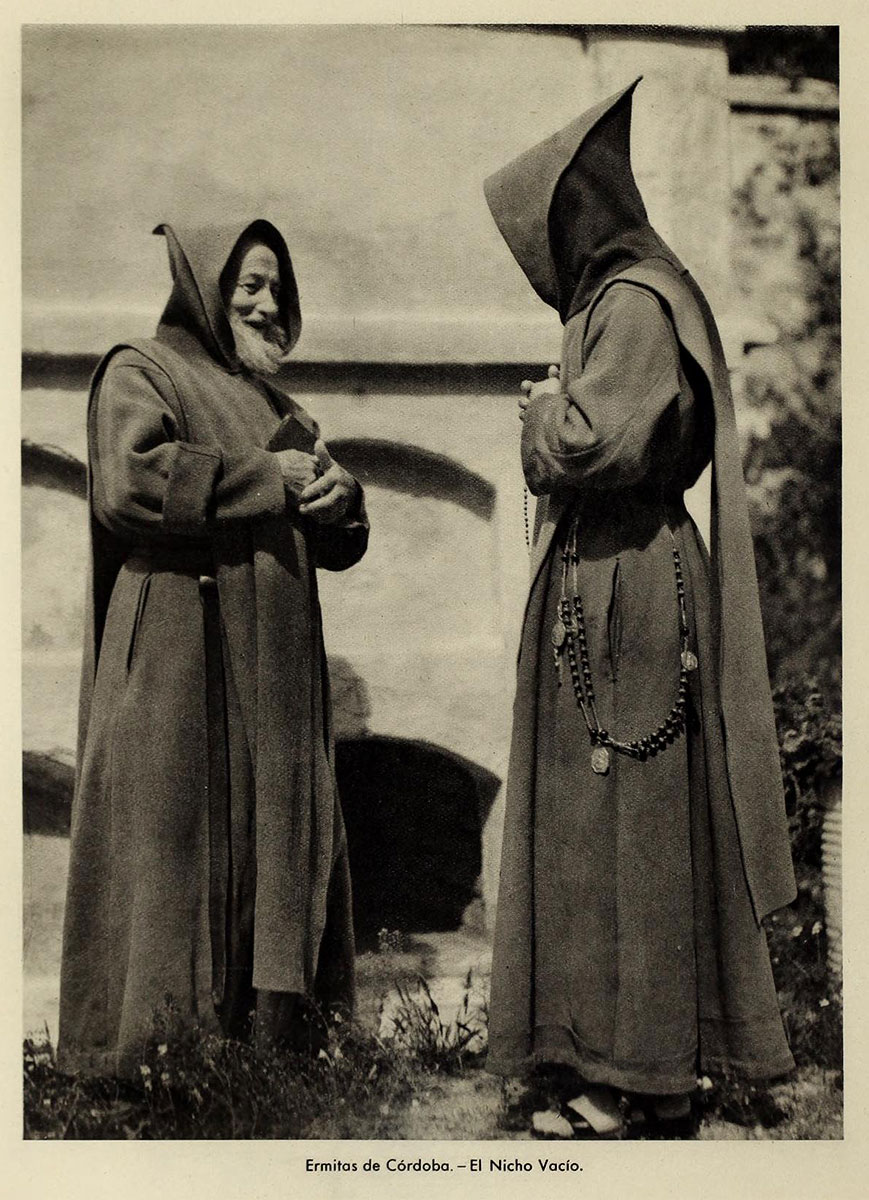
Ermitas of Córdoba
(From the book “Mystic Spain”)
Hermit life must have started long before the Muslim invasion in the mountains of Córdoba. Considering the chronicles of Bishop Hosius of Corduba (the Roman Córdoba), dear friend of Saint Anthony, in the early IVth century, after his trip to Egypt, we know that he introduced the penitent way of life in Corduba. In light of this fact, solitary religious Christian life would have started in Spain earlier than in the majority of Western Nations. It seems that from that day onwards there was never a lack of hermit caves and chapels in the mountains of Córdoba, and that comes also confirmed by the annals of Saint Eulogio the martyr, who depicted the agonies of Christian anchorites that sought refuge and lived there, such as Saint Anastasius, Saint Theodomir, Saint Rogelio and many other monks. Between the VIIIth and the IXth centuries Muslim raids, sponsored by Abd Al-Rahman II, against these places intensified and ermitas emptied and its inhabitants fled to the Kingdom of Castile. The effects of the coming of these mozarabs in to the Northern Peninsula had on Christian architecture are well known.
The monasteries and hermit chapels in the Mountains of Córdoba today share nothing but their location, chosen by the Bishop of Hosius. And not even that, as the number of chapels were greater and covered far more territory, going from Hornachuelos to Villaviciosa, with a higher density around the Castle of Albaida, where there are still some caves that carry the name of Ermitas Viejas (Old Ermitas).
The ermitas that we now see were first founded in the XVIth century by the Brother Gaspar, who initiated himself into a hermit life in the famous Mountain of Vipers in 1582.
As of today, 13 hermits live there, under the advocation of Saint Paul. They must not shave their beard and must dress a dun habit with a cloth and hood and a scapular. They only wear espadrilles.
Hermits dedicate their daily routine to manual labors and agriculture. They sleep on a bed made of a few wooden tables and a basic mat, a skin and a blanket. They obey the Elder Brother and they have a priest in the, so called, Dessert. The current one, named of Bethlehem, due to its great location is an enjoyable place –they called it the splendid Córdoba prairie–, one enters it through a whitened three-arch portico. Beyond, a wide avenue with six big cypresses reaches a beautiful marble Cross, from which two paths start. One leads to the Major Ermita or the Prayer House; the other leads to the cemetery, built two hundred years ago.
The cemetery has twelve simple niches without names, of which one always remains open and ready, holding the eternal promise for older Brothers. That is why with each new burial the oldest niche is emptied and opened for the next.
The Elder Brother lives in the Prayer House along with the the Priest, the Brothers –until they reach the age of thirty– and the newcomers.
The Napoleonic invasion as well as the following secularizations temporally suspended the hermit life in this Bethlehem Dessert.
As of today there are fourteen ermitas that go by the name of the different Apostles and other Saints. Each ermita has a prayer room and another room for manual labors; both are connected to a corridor that leads to an orchard. Also, each ermita has its own little tower bell with which the Brothers can reply the bell-tolling that comes from the Main Ermita. Next to the orchard entrance door there is a small window through which food is served while chanting the “Ave María Purísima”.
The Brothers follow the rules censored by the Bishop of Córdoba, of whom they are dependent. They only gather for the mass in the Prayer House, and every Saturday to sing the Salve. They practice penance three days a week. They are allowed to have stroll twice a month. Meat, whine and tobacco are forbidden. They wake up to pray at two and four in the morning, since those are hours no other community chooses to pray, hence there is no single moment in which God is without prayer.
